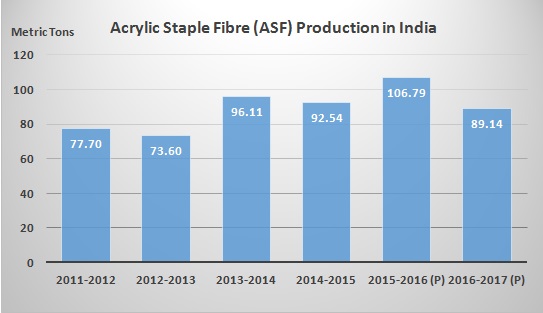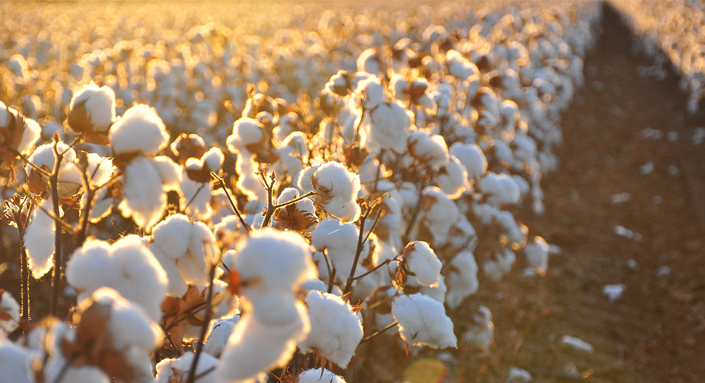
Source: fibre2fashion
India remains the largest cotton producing and second-largest cotton exporting country for the second consecutive year, as per the ICAC statistics for March 2017. With a projected production of 5.97 million metric tonnes (MMT) in 2016-17, India is way ahead of China with 3.69 MMT. India produces roughly a fourth of the global cotton production of 22.69 MMT.
Meanwhile, the government is also considering increasing the minimum support price (MSP) of cotton by ₹160 per quintal to ₹4,320 for the 2017-18 crop year beginning July, based on the recommendation of the Commission for Agricultural Costs and Prices (CACP). A news agency report said that since much of the cotton area is under Bt cotton seeds of private companies, the government is planning to promote first generation Bt cotton variety developed by the Indian Council of Agricultural Research (ICAR) and has asked National Seed Corporation to ensure sufficient supply in the ensuing kharif season. With higher MSP and normal monsoon forecast, area under cotton is expected to increase next year. That's as far as production at home is concerned.
Oblivious of the ICAC or CCI forecasts for crop areas, India will be contributing to the highest production outside of China in six years, according to the United States Department of Agriculture (USDA). The USDA's first forecast for 2017-18 said: "Stocks in China are forecast to fall substantially for the third consecutive year, with a decline of about 9 million bales, reflecting continued strong and steady state reserve sales. Despite their aggressive sales and a continuing recovery in consumption, stocks in China will remain very high with the ending stocks-to-use ratio above 100 per cent for the sixth consecutive year." China announced a new plan in 2016 to auction off cotton reserve stocks each year; it plans to gradually reduce stocks each year until the reserves reach what they consider a "reasonable level." According to the National Cotton Council of America's annual economic outlook, "While China's increased consumption of reserve stocks has bolstered mill use in 2016, it has also curbed China's demand for imported cotton fibre and cotton yarn."
A possible way out for industries was suggested by a May 2016 report from True Price and IDH Sustainable Trade Initiative. Their The True Price of Cotton from India report showed that the cultivation phase accounted for about 30 per cent of total societal costs in the supply chain, with 75 per cent of them being environmental costs. True, several sustainable interventions had improved the livelihood of cotton farmers, but there was still room to further decrease societal costs. The report carried the results of a study on the external costs of the cotton supply chain (smallholder cultivation in India). The external costs of conventional cotton were compared to certified cotton.
Many of the findings were straight on the face:
• External costs are costs caused by economic activities which are not reflected in the prices charged for the goods and services being provided. External costs can be classified as environmental costs if they have a direct effect on the environment and as social costs if they have a direct effect on the well-being of people.
• The cultivation of smallholder cotton in India has total external costs of €3.65/kg seed cotton. By summing up the external costs with the farm gate price (€0.55/kg seed cotton), a true price of €4.20/kg seed cotton is obtained.
• Roughly 74 per cent of the total external costs of cultivation are environmental costs, 35 per cent are caused by water use. The other largest external cost drivers are water pollution and underpayment. The cultivation phase accounts for 32 per cent of the total external costs of the cotton supply chain.
• Certified cotton has 35 per cent lower external costs of cultivation than conventional cotton. About 70 per cent of this change is caused by higher productivity of certified farms, 20 per cent by better environmental conditions and 10 per cent by better social conditions.
• Interventions that reduce scarce water use by 30 per cent have the potential to further decrease the external costs of certified cotton cultivation by around 7 per cent (€0.16/kg seed cotton). Additionally, eliminating income discrimination has the potential to reduce external costs of certified cotton cultivation by 5 per cent (€0.13/kg seed cotton).
The researchers asserted, "Companies can now use this information to reduce their costs with intervention projects, like training farmers on water saving techniques or gender equality."
